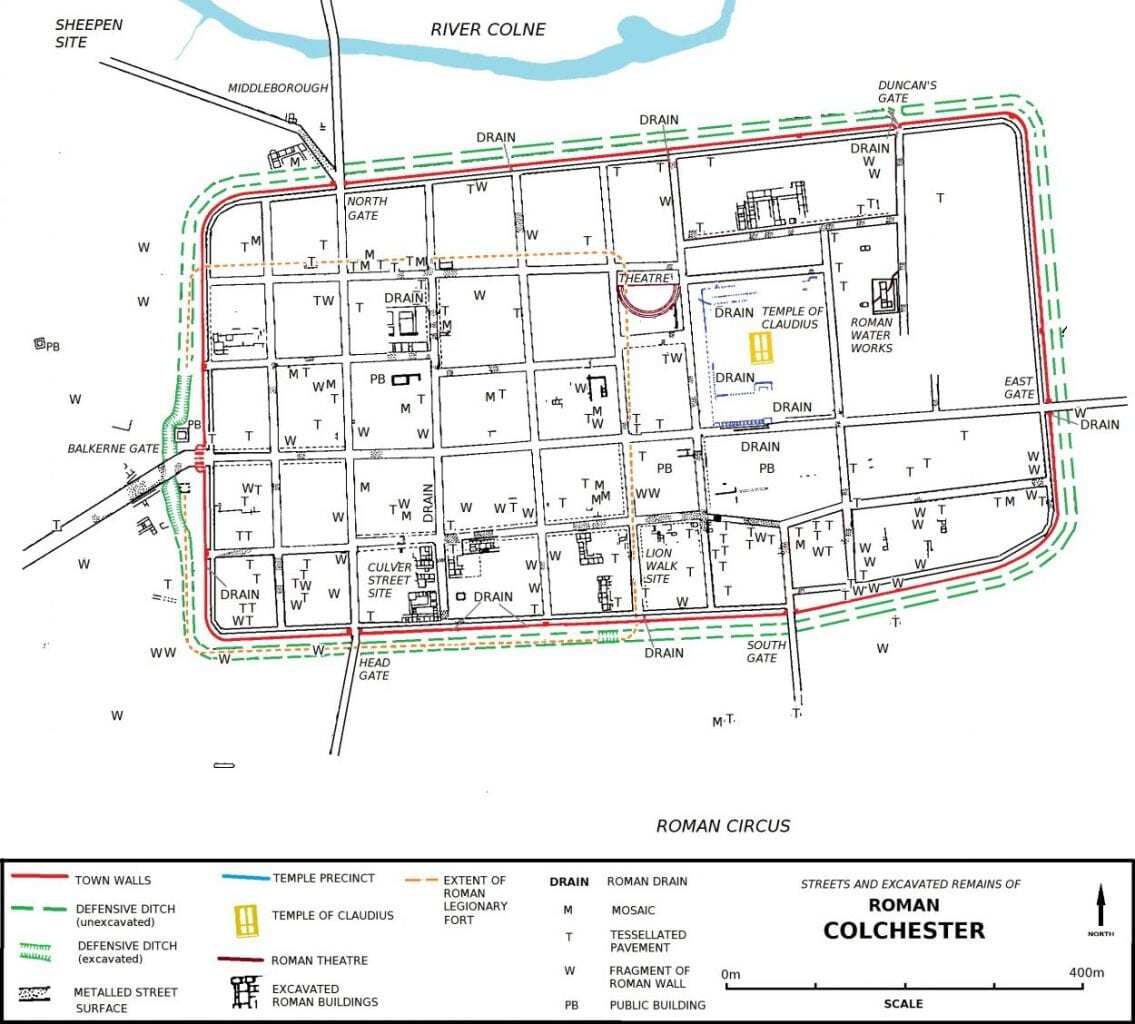Camulodunum was a Roman city and the first capital of the Roman province of Britannia, in what is now the present-day city of Colchester in Essex, England.
Prior to the arrival of the Romans in AD 43, the area was occupied by the Iron Age Trinovantes, and later the Catuvellauni tribes, who constructed the oppidum of Camulodunon (meaning “the stronghold of Camulus” – a Brythonic deity that the Roman’s associated with Mars) along with a system of defensive earthworks.
During the 1st century AD, the Catuvellauni were one of the dominant tribes, ruling large parts of southern and eastern Britain. This made them a prime target for the Romans to gain a permanent foothold, with the tribal lands being subjugated during the Claudian invasion led by Aulus Plautius.
The Romans constructed the first legionary fortress or castrum at Camulodunum, protected by a large palisaded Vallum and Fossa. The fort was garrisoned by the Legio XX Valeria Victrix (identified by a boar on the standard), one of the four initial legions in the Roman invasion.
After AD 49, the fortress was decommissioned and converted into a civilian town for discharged legionnaires and named Colonia Victricensis. The Roman historian Publius (or Gaius) Cornelius Tacitus wrote that Colonia Victricensis was “a strong colonia of ex-soldiers established on conquered territory, to provide a protection against rebels and a centre for instructing the provincials in the procedures of the law”.

The Colonia quickly grew to become the capital of the Province, administered by the provincial Procurator as well as the centre of the Imperial Cult in dedication to Claudius. In AD 60-61, an uprising orchestrated by Queen Boudica of the Iceni led a tribal coalition that destroyed Camulodunum, Londinium (London), and Verulamium (St Albans).
Despite attempts by the Legio IX Hispana to rescue the besieged inhabitants, the population of Camulodunum was slaughtered along with large elements of the Hispana. After the uprising was subdued, Camulodunum was rebuilt on a larger scale, but the Procurator of the province was relocated to Londinium.
The city plan retained elements of the legionary fortress, with a typical Roman grid street system that centred on the Cardo maximus (a north–south street) and a Decumanus Maximus (east–west street). Several major public buildings were constructed including the temple of Claudius, a theatre, basilica, and the only known Roman chariot circus in the province.
By the 4th century AD, Camulodunum was in decline and the population shrank due to a series of crises’ in the Empire, including the breakaway Gallic Empire (of which Britannia was a part), and raids by Saxon pirates, both of which led to the creation of the Saxon Shore forts along the East coast of Britain.
With the collapse of Roman rule, the city remained occupied into the 5th century AD by Sub Roman Britons, until the probable abandonment or slow population migration due to invading Anglo-Saxons who settled within the city walls.
Header Image Credit – Ben Sutherland – CC BY 2.0







